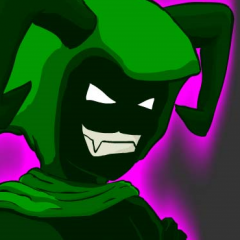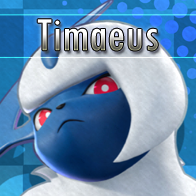Leaderboard
Popular Content
Showing content with the highest reputation on 06/03/2017 in all areas
-

(Help) Effectively Transitioning Between Sections
timaeus222 and one other reacted to DarkEco for a topic
I expected no less from this community. Outstanding feedback all round. I'll definitely be researching a lot of the information here! Thanks for all the answers!2 points -

Lylat System CLEAR: A Star Fox Tribute Album
The Nikanoru reacted to DS394 for a topic
Almost at the big day!1 point -
I think that, besides the great things mentioned above it's also very important to have certain arranging techniques which are difficult to acquire by yourself. This of course depends on the genre of music you're writing, but a good knowledge of things like voice leading, instrumentation, reharmonization and similar things are generally very useful and help a lot with composing. Luckily, there are a lot of books about this. I'm personally not a big fan of books, but there are a few classics out there which in my opinion are a must have for every composer. Of course, it's a totally different thing whether you're writing for a string orchestra or for a rock band, so I can't really recommend anything as I don't know what your type of music and line up is. But, what I'm trying to say is that you don't have to do anything by yourself. There's a lot of people in the world that know a lot about composition and are sharing their knowledge in great detail for a small price. Just blindly listening to other people and constantly staying in a safe zone is of course also not the way. Absorbing information about things that interest you, and meanwhile experimenting with the things you're learning is in my opinion one of the richest and most fulfilling aspects of writing music. It's about the joy of discovering. Just playing around with chords on a piano for a few hours can be a very valuable and educational experience. This, in my experience, also brings the best results. Someone can tell you that the first inversion of a major chord sounds amazing, but hearing it yourself, and most importantly, stumbling on it by yourself when you're just messing around a bit, maybe accidentally adding a 9, has a lot more impact. First of all because it highly depends on the context, but also because that way it comes from yourself. This makes your music more you, and this authenticity and personality is what makes music so beautiful.1 point
-

Tekken 7- The OCR Garpocalyptic Beatdown
Garpocalypse reacted to Ivan Hakštok for a topic
The game is great. I beat the story mode and most of the character episodes yesterday, and after that I've started with some online matches. I'm mostly on the losing side, but I figured the pros will all get their rank promotions during the next few days and I'll be able to play more against people of my skill level.1 point -

Tekken 7- The OCR Garpocalyptic Beatdown
Garpocalypse reacted to Drawn by Dai for a topic
got it on ps4. It's wondrous1 point -

Darkish Dance Beat
timaeus222 reacted to AngelCityOutlaw for a topic
Okay, I'm sorry, but I've been here for quite some time and this is the most insane feedback I have ever seen on any music forum anywhere. Whether you find his track "cliche" or not is completely irrelevant to making a quality track and in dance music in general, there are very specific basslines, sounds etc. that define the sub-genre in question and as such listeners expect to hear them and they also play to timbres strength. You actually recommend he undergo shock therapy to be "forget whatever he knows about music". For real? I don't know what you're smoking, but pass some of that this way. ANYWAY Here's a few problems: • The bass synth is pretty cheesy. See if you can find or create a deeper sound with a bit more sustain. • Timaeus talks about the lack of melodic contour. This can be solved by having using strong voice leading in your lines and correct utilization of non-chord tones. Here is a good list of the types of non-chord tones that create dissonance and how to resolve them. • The lead synths sit above your voice, playing a different melody and this is a problem because our ear is naturally most perceptive to the highest frequency in the piece. As such, it's easy to lose focus of your voice and just start listening to the synth. • Past the 1 minute mark, you have these low organ-sounding chords going on at the same time as that high synth, creating significant gap. Further regarding overtones, that synth is voiced considerably higher than your singing voice and organish patch. As harmonies are played lower, they should be spread out farther apart; as they go higher in pitch, they should be closer together. You have a great voice, though! Keep it up man!1 point -

Lylat System CLEAR: A Star Fox Tribute Album
TheChargingRhino reacted to The Nikanoru for a topic
Hey everyone! Updates for today: Promotional poster is being worked on as I write this. My artist has found a hole in his schedule and has been discussing ideas for the layout with me. I'm hoping to get something back from him next week. I've touched base with @Starphoenix on website design, but not much else yet. I'll be looking at layouts over the weekend to give him some suggestions of what I like and what I don't like. Haven't seen any artist bios yet - a little starting content for the website would be nice, if anyone is bored. The goal for website framework to be in place is late August. Second call for anyone interested in voicing a Star Fox character - drop me a line here or by PM if you're interested. ----- I took WAY too long to respond to this. Sorry, Rhino. This is also kind of cool - especially the bit after 1:55 - but I can't accept this in its current form. It is too close in design to another remix we have on the go - SCRAMBLE - and we can't have remixes of remixes on an OCR release. I recommend you continue with the synthwave version I have currently posted from you - this version is sounding very good so far (to me, anyway) and I think you have a much better approach to build your style with here. Maybe you could find a way to work the ideas you had above into the synthwave version? EDIT: FOUR WEEKS TO GO before next deadline!1 point -

Recreating a synth sound
timaeus222 reacted to Sbeast for a topic
Thanks you both for the replies. I've been playing around with some settings on Zebra2 and think I have something close now.1 point -

(Help) Effectively Transitioning Between Sections
DarkEco reacted to timaeus222 for a topic
The people above me gave you great pointers. I just have a few things to add or reiterate, and I'll use this mix of mine as an example of both compositional and textural transitions. If you already know what the sound design in section B is going to be like, in transitioning from A to B, you could use some tonal instruments from B as a lead-in component. I've been trying to do this all the time now, and you can see it many times here. EX: 0:58 - 1:00, 1:13 - 1:15, 2:36 - 2:37, etc. Something as simple as a reverse can connect the dynamics (or at least, contribute to it). Experiment with reversing things like cymbals, white noise hits, fingerbells, and so on. I don't think I've had a good mix where I haven't done this... but this usually needs other accompanying techniques. EX: 0:28 - 0:30, 1:29 - 1:31, etc. Pretty much everywhere in this mix! You can explicitly write a part that introduces the rhythmic contrast that you'll write in the next section. EX: 1:55 - 1:59 Drums should always be considered as a signaling tool, particularly if you go from a section with no drums to heavy drums or vice versa. EX: 2:25 - 2:26, 2:37 - 2:38 Try to match up the frequency spectra of the two sections. This is kinda difficult to pull off, and is not necessarily the first thing you think of, but sometimes you're not sure why it's not quite working, and there's just a small disconnect in the frequency spectrum that works out when it's all matched up. EX: 1:29 - 1:30, 1:57 - 1:59 (1:29 in particular has something interesting; the drone is swapped out for a sustained bass with almost no attack. They have similar frequency spectra, which can make it feel like nothing actually changed in the bass... and that's what I actually wanted!)1 point -

(Help) Effectively Transitioning Between Sections
DarkEco reacted to AngelCityOutlaw for a topic
Everything everyone else said and.. • Proper voice leading will help you switch between incredibly different ideas seamlessly with little effort. • Varying the intensity and density of the arrangement • One bar between the sections that acts as a "fill" of sorts. In this bar, you might bring in some of the voices from the next section while ending the previous section on a V chord or some other cadence. Utilizing contrary motion between these new voices as they rise/fall to toward the new harmony (generally the tonic chord) is very effective. • Ending the section on the V or VII chord and using sound design to the lead into the next part • Keeping an ostinato or one element the same into the next section. • Modulation • Composing themes with sentence and period structures helps greatly to make clearly-defined sections. Examples that utilize these concepts:1 point
